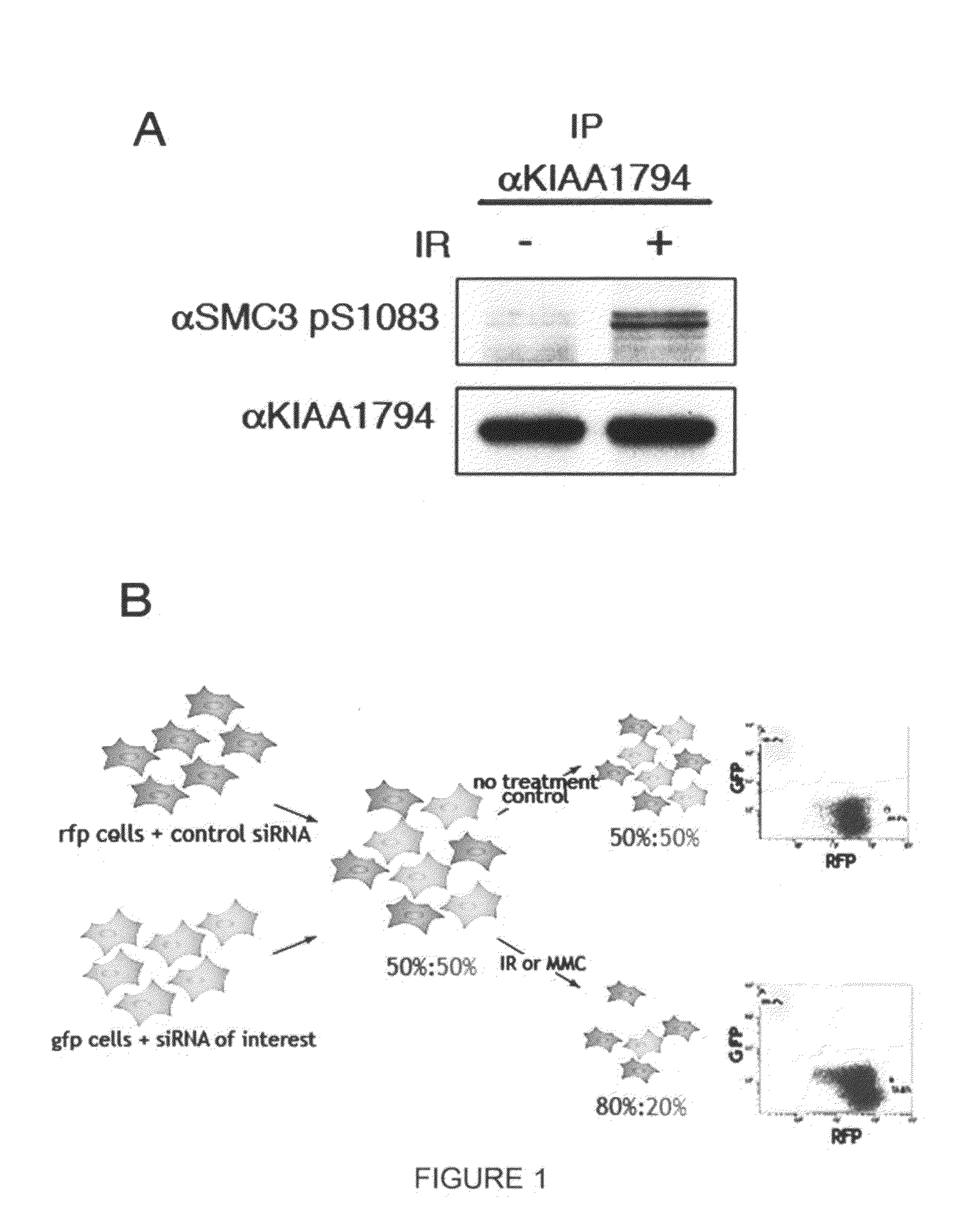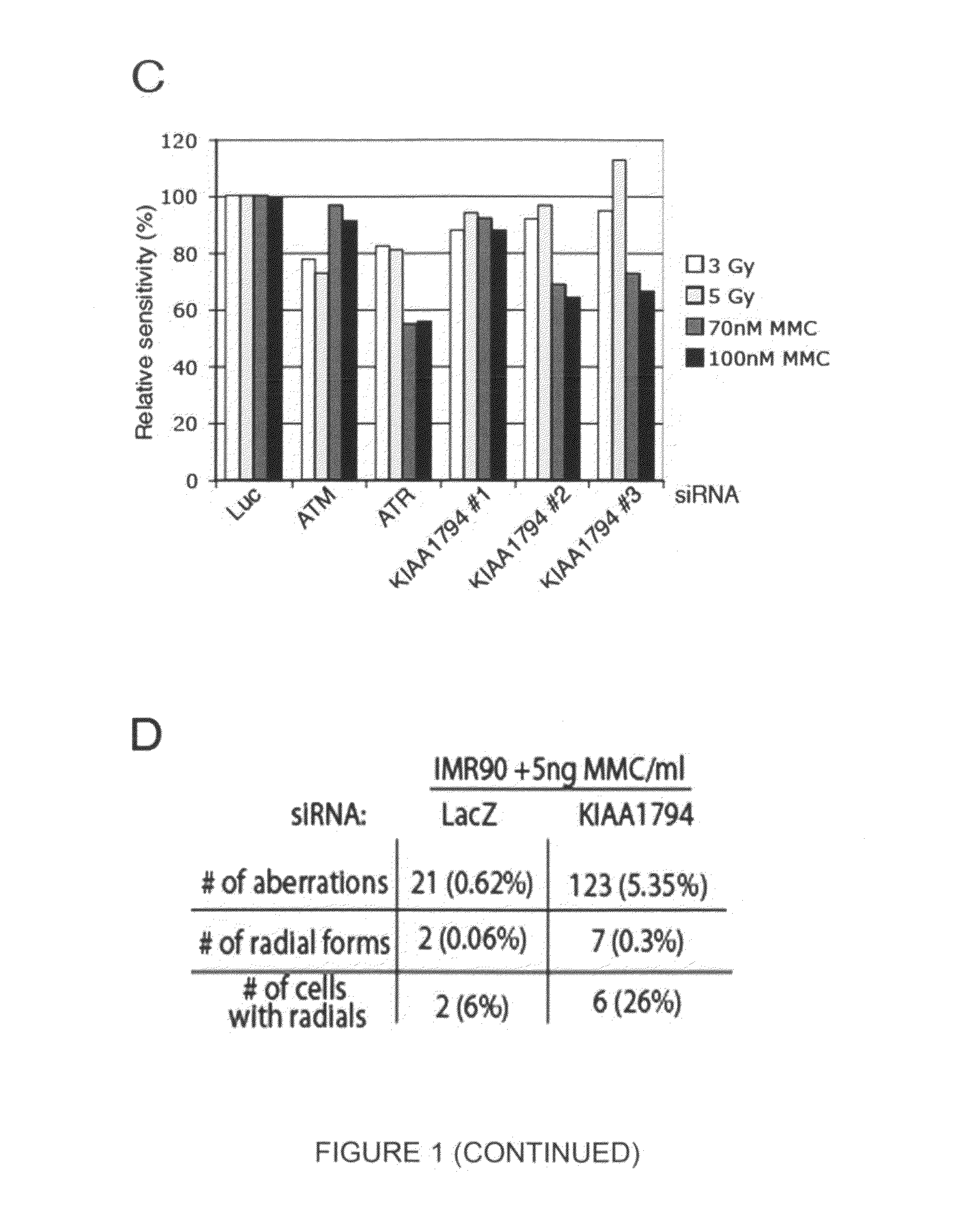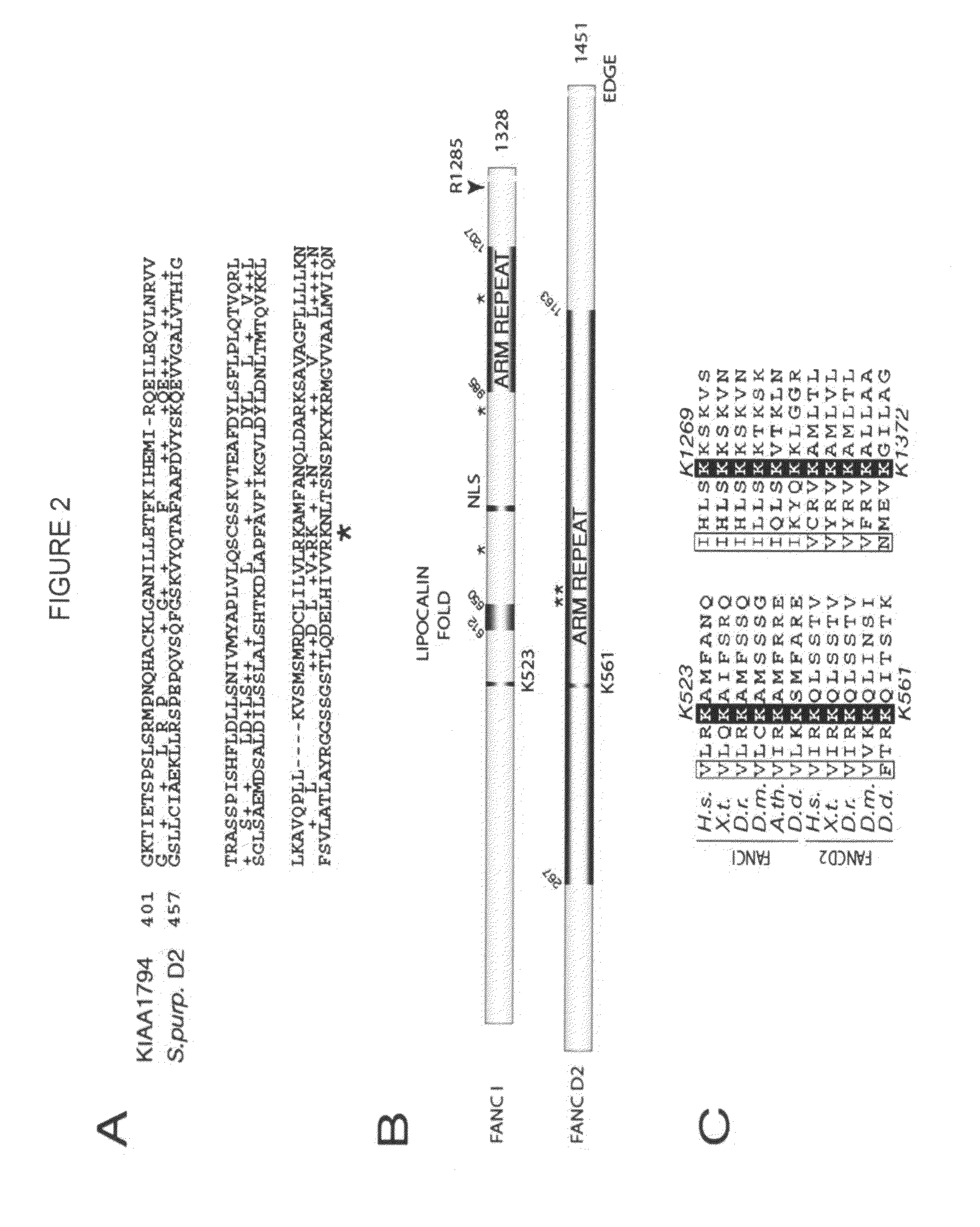Prognostic, diagnostic, and cancer therapeutic uses of FANCI and FANCI modulating agents
a technology of fanci and modulating agents, which is applied in the direction of immunoglobulins, peptides, drugs against animals/humans, etc., can solve the problems of both developmental difficulties and tumorigenesis, the precise mechanism(s) underlying the intrinsic and extrinsic resistance to chemotherapy has not been elucidated, and the effect of chemosensitizers
- Summary
- Abstract
- Description
- Claims
- Application Information
AI Technical Summary
Benefits of technology
Problems solved by technology
Method used
Image
Examples
example 1
Methods
Cell Lines
[0242]Complemented cell lines PD20 and GM6914 were described previously (Taniguchi et al. (2002) Cell 109: 459-472), DR-U2OS were provided by Maria Jasin (Xia et al. (2006) Mol Cell 22: 719-729). GM02188 was obtained from Coriell, BD0952 from European Collection of Cell Cultures (http: / / www.ecacc.org.uk), and U20S from American Cell Culture Collection (ATCC). The adherent cell lines were grown in Dulbecco Modified Eagle medium (DMEM) supplemented with 100 units of penicillin per ml, 0.1 mg streptomycin per ml, L-glutamine (2 mM), non-essential amino acids (0.1 mM), and 10% or 15% (v / v) FBS (Invitrogen) depending on the cell line, and lymphoblastoid lines were grown in RPMI with the same supplementation. Retroviral transduction of the lymphocytes was performed by spirning 1×106 with a freshly-collected virus supplemented with 8 μg of polybrene per ml of supernatant at 2500 rpm for 45 minutes at room temperature.
Antibodies
[0243]Antibodies were as follows: KIAA1794; BL...
example 2
KIAA1794 / FANCI was Identified as a Phosphoprotein
[0259]KLAA1794 / FANCI was identified as a protein whose phosphorylation was induced upon IR treatment (Matsuoka et al., submitted). In that study, SILAC (reviewed in (Mann (2006) Nat Rev Mol Cell Biol 7: 952-958)) and peptide immunoprecipitation (Rush et al. (2005) Nat Biotechnol 23: 94-101) using phosphospecific antibodies followed by mass spectrometry before and after DNA damage was used to identify those proteins that were inducibly phosphorylated on SQ or TQ motifs. Three phosphorylation sites were detected in a human KIAA1794 protein: S730, T952, S1121, and two other sites in the mouse protein S555, T558. The KIAA1794 protein was renamed FANCI, since, as shown below, the locus encoding this protein was identified as mutated in an individual with Fanconi anemia complementation group I. Immunoblotting of FANCI after IR with a phospho-SQ antibody confirmed its inducible phosphorylation (refer to FIG. 1A, showing Western analysis with...
example 3
Multicolor Competition Assay (MCA) Used to Study DNA Damage Sensitivity
[0260]To efficiently study DNA damage sensitivity of cells with a variety of genetic perturbations, a simple competition assay was developed that proved both quantitative and fast (refer to FIG. 1B, which schmatically illustrates the multi-color competition assay (MCA)—here, the knockdown of a protein of interest caused the gfp cells to become DNA damage sensitive without influencing their proliferative capacity in the absence of damage. The relative resistance to damage of the si-treated cells was 40% of the non-si treated cells). Two populations of U20S (osteosarcoma) cells differing only in their color were created by expression of red fluorescent protein (RFP) or green fluorescent protein (GFP). siRNA depletion of the protein of interest was carried out in the green cells while the red cells were transfected with control siRNA. Equal numbers of green and red cells were mixed, left untreated or treated with ga...
PUM
| Property | Measurement | Unit |
|---|---|---|
| volume | aaaaa | aaaaa |
| body weight | aaaaa | aaaaa |
| weight | aaaaa | aaaaa |
Abstract
Description
Claims
Application Information
 Login to View More
Login to View More - R&D
- Intellectual Property
- Life Sciences
- Materials
- Tech Scout
- Unparalleled Data Quality
- Higher Quality Content
- 60% Fewer Hallucinations
Browse by: Latest US Patents, China's latest patents, Technical Efficacy Thesaurus, Application Domain, Technology Topic, Popular Technical Reports.
© 2025 PatSnap. All rights reserved.Legal|Privacy policy|Modern Slavery Act Transparency Statement|Sitemap|About US| Contact US: help@patsnap.com



